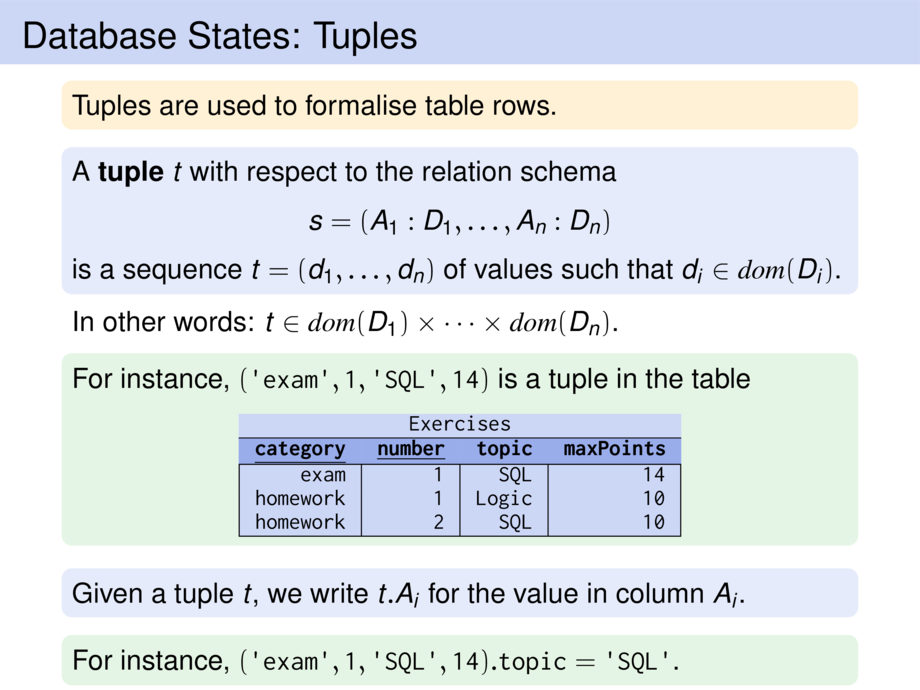



































































































18/77
\begin{frame}
\frametitle{Database States: Tuples}
\vspace*{-.4ex}
\begin{goal}{}
Tuples are used to formalise table rows.
\end{goal}
\begin{block}{}
A \textbf{tuple} $t$ with respect to the relation schema
\begin{talign}
s = (A_1:D_1, \dots, A_n:D_n)
\end{talign}
is a sequence $t = (d_1, \dots, d_n)$ of values such that $d_i \in \dom{D_i}$.
\end{block}
In other words: $t \in \dom{D_1} \times \cdots \times \dom{D_n}$.
\begin{exampleblock}{}
For instance, $(\sql{\textquotesingle{}exam\textquotesingle{}}, \sql{1}, \sql{\textquotesingle{}SQL\textquotesingle{}},\sql{14})$ is a tuple in the table \vspace{-1ex}
\begin{center}
{\ttfamily\footnotesize\tableExercises}
\end{center}
\end{exampleblock}
\pause\smallskip
\begin{block}{}
Given a tuple $t$, we write $t.A_i$ for the value in column $A_i$.
\end{block}
\begin{exampleblock}{}
For instance,
$(\sql{\textquotesingle{}exam\textquotesingle{}}, \sql{1}, \sql{\textquotesingle{}SQL\textquotesingle{}},\sql{14}).\sql{topic} = \sql{\textquotesingle{}SQL\textquotesingle{}}$.
\end{exampleblock}
\vspace{10cm}
\end{frame}

